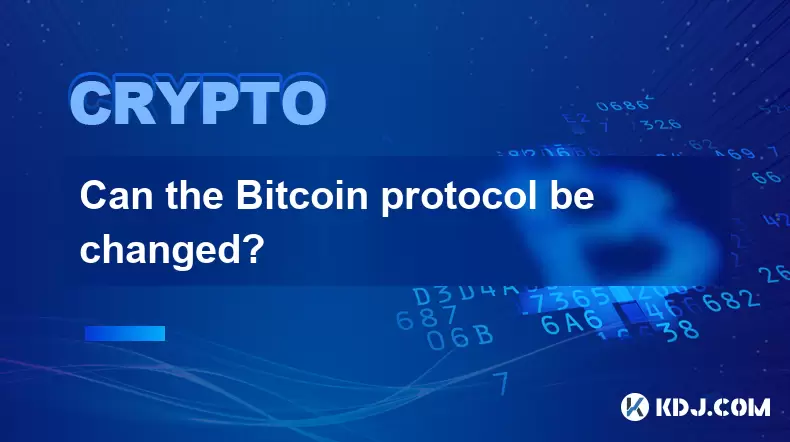-
 Bitcoin
Bitcoin $112700
0.78% -
 Ethereum
Ethereum $4354
1.16% -
 XRP
XRP $3.008
2.45% -
 Tether USDt
Tether USDt $0.0000
0.00% -
 BNB
BNB $882.1
0.67% -
 Solana
Solana $217.5
1.90% -
 USDC
USDC $0.9997
-0.01% -
 Dogecoin
Dogecoin $0.2417
3.54% -
 TRON
TRON $0.3374
1.36% -
 Cardano
Cardano $0.8852
4.12% -
 Hyperliquid
Hyperliquid $54.71
8.39% -
 Chainlink
Chainlink $23.67
3.21% -
 Ethena USDe
Ethena USDe $1.001
0.05% -
 Sui
Sui $3.590
3.93% -
 Stellar
Stellar $0.3827
3.99% -
 Bitcoin Cash
Bitcoin Cash $584.1
-1.63% -
 Avalanche
Avalanche $26.02
3.45% -
 Hedera
Hedera $0.2330
4.73% -
 UNUS SED LEO
UNUS SED LEO $9.587
0.53% -
 Litecoin
Litecoin $113.8
0.42% -
 Cronos
Cronos $0.2474
-3.30% -
 Toncoin
Toncoin $3.128
1.25% -
 Shiba Inu
Shiba Inu $0.00001306
2.83% -
 Polkadot
Polkadot $4.165
3.54% -
 Uniswap
Uniswap $9.810
2.06% -
 Ethena
Ethena $0.8409
8.42% -
 Dai
Dai $0.9998
-0.02% -
 World Liberty Financial
World Liberty Financial $0.2154
3.43% -
 Monero
Monero $273.0
0.21% -
 Aave
Aave $307.0
2.15%
Bitcoinのトレンド疲労を特定するための最良の指標
Bitcoin trend exhaustion can signal potential reversals, often identified through technical indicators like RSI, MACD, and volume patterns.
2025/07/08 09:36

Bitcoinのトレンド疲労を理解する
トレンドの疲労とは、価格の動きの背後にある勢いが上向きであろうと下向きであろうと、衰退し始める状況を指します。 Bitcoinのコンテキストでは、これはしばしば潜在的な逆転または統合フェーズを示します。トレンドの疲労を特定することは、強力な動きの尾の端でポジションに入ることを避けたいトレーダーや投資家にとって非常に重要です。重要なのは、勢いが弱くなることを示すパターンまたは技術的なシグナルを認識することにあります。
トレンドの疲労を検出する最も信頼できる方法の1つは、技術指標を使用することです。これらのツールは、市場の感情を定量化し、チャートに視覚的な手がかりを提供するのに役立ちます。ただし、すべての指標が、傾向が蒸気を失っていることを識別することに関して等しく効果的であるわけではありません。
疲労信号としての相対強度指数(RSI)
相対強度指数(RSI)は、資産の過剰な販売条件または過剰な条件を検出するために最も広く使用されている発振器の1つです。 Bitcoinに適用すると、RSIは潜在的な傾向の枯渇ポイントを特定するための強力なツールとして機能します。
- 70を超えるRSIは通常、買収過剰条件を示しており、購入圧力が衰退している可能性があることを示唆しています。
- 逆に、 30未満のRSIは領土の過剰販売を示しており、販売圧力が疲労に近づいている可能性があることを示しています。
ただし、これらのレベルを観察するだけでは十分ではありません。トレーダーは、価格アクションとRSIの間の相違を探す必要があります。たとえば、 Bitcoinが新しい高さを作るが、RSIが以前のピークを上回ることができない場合、これはアップトレンドが力を失っていることを示す可能性があります。
さらに、RSI分析内の概念である障害が揺れ動く可能性があり、さらに疲労を確認できます。 RSIが買収または過剰販売ゾーンから脱出し、ブレイクアウトを確認せずに再テストし、逆転の可能性があることを示すときに、障害スイングが発生します。
MACDヒストグラムと運動量シフト
移動平均収束発散(MACD)ヒストグラムは、 Bitcoinのトレンド疲労を見つけるためのもう1つの貴重なツールです。標準のMACDラインおよび信号ラインのクロスオーバーとは異なり、ヒストグラムは運動量の変化のより微妙なビューを提供します。
- ヒストグラムは、MACDラインと信号線の間の距離を測定します。
- 強い傾向の後にバーが短くなると、勢いが減少していることが示唆されます。
- アップトレンドまたはダウントレンド中のヒストグラムの平坦化または縮小は、現在の動きがその端に近づいていることを示しています。
トレーダーは、ゼロラインのクロスオーバーにも注意を払う必要があります。ヒストグラムがアップトレンド中に正の領域からネガティブな領域に交差する場合、ブルズがコントロールを失っていることを意味する可能性があります。同様に、下降トレンド中の交差点は、クマが崩れていることを示唆するかもしれません。
ボリュームプロファイルとオーダーフロー分析
従来の技術指標は有用ですが、ボリュームプロファイルと注文フロー分析は、 Bitcoinのトレンド疲労ポイントに関するより深い洞察を提供します。ボリュームは、市場への参加と信念を反映する主要な指標です。
- ボリュームごとのプロファイルは、最も多くの取引活動が発生した場所を示しており、価値と潜在的な逆転の領域を特定するのに役立ちます。
- 強力な上昇傾向の間、価格の上昇にもかかわらず、ボリュームが枯渇し始めた場合、バイヤーがためらっていることを示している可能性があります。
- 逆に、下降トレンドの間、価格の動きがほとんどないスパイクボリュームは、売り手が自分のポジションを使い果たしていることを示唆しています。
市場の深さや注文書のヒートマップなどの注文フローツールにより、トレーダーは需要と供給のリアルタイムの変化を確認できます。これらのツールは、 Bitcoinのような揮発性市場で特に役立ちます。そこでは、大きな制度的命令のために突然の急増または崩壊が発生する可能性があります。
フィボナッチのリトレースメントと拡張レベル
フィボナッチのリトレースメントと拡張レベルは、フィボナッチシーケンスに由来し、潜在的な反転ゾーンまたは継続ゾーンを特定するためにトレーダーによって一般的に使用されています。 Bitcoinの場合、これらのレベルは、技術アナリストの間で広範囲にわたる採用により、自己実現的な予言として機能することがよくあります。
- 強力な集会または売却の後、主要なフィボナッチレベル(38.2%、50%、または61.8%など)へのリトレクションは、サポートまたは抵抗が出現する可能性のある場所を示しています。
- さらに重要なことは、拡張レベル(161.8%または261.8%など)が、現在の傾向が蒸気がなくなる可能性のある場所を強調できることです。
- 価格が拡張レベルに近づき、長い芯や弱気なろうそく足のパターンなど、拒絶の兆候を示す場合、傾向の疲労を示す可能性があります。
これらのレベルは、RSIやMACDなどの他のインジケーターと組み合わせて、逆転または統合の可能性を確認する場合に最適に機能します。
より良い精度のためにインジケーターを組み合わせます
Bitcoinのトレンド疲労を分析する場合、単一の指標は絶対確実ではありません。複数のツールを組み合わせると、トレンドが失速または逆になっているときに正確に識別する確率が高まります。
例えば:
- MACDヒストグラムの収縮と並んでRSIの発散を使用して、勢いの勢いを弱めます。
- フィボナッチ拡張とボリュームプロファイルスパイクを使用して、疑わしい排出ゾーンを確認します。
- 頭と肩などのチャートパターン、またはダブルトップ/ボトムなどのチャートパターンを使用した相互参照順序データ。
さまざまな種類の分析を重ねることにより、トレーダーは誤った信号を除外し、 Bitcoinの潜在的なターニングポイントのより明確な画像を獲得できます。
FAQ:よくある質問
Q:さまざまな時間枠でトレンド排気指標を使用できますか?はい、RSI、MACD、Fibonacciのレベルなどの指標は、日中チャートから毎週のチャートまで、さまざまな時間枠に適用できます。ただし、より長い時間枠は、騒音の減少と制度的参加の増加により、より信頼性の高いシグナルを生成する傾向があります。
Q:Bitcoinは、長期間にわたって買われすぎたり売られたりし続けることができますか?絶対に。特にBitcoinのような非常に不安定な資産では、強い傾向の間、RSIは数日または数週間、過剰に買収(70を超えて)または売られすぎ(30未満)領土にとどまることができます。これが、正確な測定値に分岐およびその他の合流要因が不可欠である理由です。
Q:健康的なプルバックとトレンドの疲労を区別するにはどうすればよいですか?健康的なプルバックは通常、ボリュームを維持し、重要なサポート/抵抗レベルを破りません。対照的に、トレンドの疲労は、多くの場合、勢いの指標の減少、鋭い反転、および発散と一致します。
Q:傾向の疲労を示す特定のろうそく足パターンはありますか?はい、シューティングスター、ハンマー、ろうそくの飲み込み、 doji層などのパターンは、極端な価格レベルや重要なフィボナッチゾーンに現れると、勢いが弱くなることを示しています。
免責事項:info@kdj.com
提供される情報は取引に関するアドバイスではありません。 kdj.com は、この記事で提供される情報に基づいて行われた投資に対して一切の責任を負いません。暗号通貨は変動性が高いため、十分な調査を行った上で慎重に投資することを強くお勧めします。
このウェブサイトで使用されているコンテンツが著作権を侵害していると思われる場合は、直ちに当社 (info@kdj.com) までご連絡ください。速やかに削除させていただきます。
- BlackRock、Bitcoin ETF、および次のBTC移動:市場を推進しているものは何ですか?
- 2025-09-10 04:25:13
- 遊び場、暗号ゲーム、Web3の未来:ニューヨーカーのテイク
- 2025-09-10 04:25:13
- Cardano、Ethereum、およびHoskinson:暗号の風景をナビゲートします
- 2025-09-10 02:25:14
- クジラのアイロールブロックの蓄積の成長に伴い、ビットコインの価格は安定しています
- 2025-09-10 02:25:14
- ビットコイン、ソラナ、イーサリアム:2025年に暗号の風景をナビゲートします
- 2025-09-10 02:30:12
- Vivopower、Tembo、およびRLUSD:ブロックチェーンファイナンスのある電気自動車の革新の推進
- 2025-09-10 02:45:12
関連知識

Bitcoinはなぜ革新的な技術と見なされているのですか?
2025-08-12 20:29:18
地方分権化と中央当局の排除Bitcoinの背後にあるコアイノベーションは、その分散化された建築にあり、従来の金融システムに根本的に挑戦しています。中央銀行や金融機関が管理する従来の通貨とは異なり、 Bitcoinは、単一のエンティティが制御を保持していないピアツーピアネットワークで運営しています。こ...

Bitcoinはなぜ革新的な技術と見なされているのですか?
2025-08-10 19:42:58
分散化されたアーキテクチャと信頼のないトランザクションBitcoinは、銀行や政府などの中央当局に依存せずに運営されている分散化された建築を導入したため、革命的と見なされます。従来の金融システムでは、トランザクションを検証および記録するために、仲介者に信頼が置かれています。 Bitcoinは、すべて...

Bitcoinの重要な機能は何ですか?
2025-08-10 02:50:11
分散化とピアツーピアネットワークBitcoinの最も決定的な特徴の1つは、その分散型の性質です。銀行や政府などの中央当局に依存している従来の金融システムとは異なり、Bitcoinは、分散型ノードのネットワークによってトランザクションが検証および記録されるピアツーピアネットワークで運営されています。こ...

Bitcoinプロトコルを変更できますか?
2025-08-07 13:16:36
Bitcoinプロトコルの理解Bitcoinプロトコルは、 Bitcoinネットワークがどのように動作するかを支配するルールの基礎セットです。トランザクションの検証やブロック作成からコンセンサスメカニズムや暗号化セキュリティまで、すべてを定義します。これらのルールは、ネットワークの整合性を維持するた...

Bitcoinプロトコルを変更できますか?
2025-08-11 01:01:10
Bitcoinプロトコル構造の理解Bitcoinプロトコルは、 Bitcoinネットワークがどのように動作するかを支配するルールの基礎セットです。これらのルールは、トランザクションの検証やブロック作成からコンセンサスメカニズムやネットワーク通信まで、すべてを定義します。 Bitcoinは、そのコアで...

Bitcoinトランザクションが確認された後はどうなりますか?
2025-08-09 05:22:07
Bitcoinトランザクション確認の理解Bitcoinトランザクションが開始されると、ネットワークにブロードキャストされ、 Mempoolとして知られる未確認のトランザクションのプールに配置されます。マイナーは、このプールからトランザクションを選択して、マイニングしようとする次のブロックに含めるよう...

Bitcoinはなぜ革新的な技術と見なされているのですか?
2025-08-12 20:29:18
地方分権化と中央当局の排除Bitcoinの背後にあるコアイノベーションは、その分散化された建築にあり、従来の金融システムに根本的に挑戦しています。中央銀行や金融機関が管理する従来の通貨とは異なり、 Bitcoinは、単一のエンティティが制御を保持していないピアツーピアネットワークで運営しています。こ...

Bitcoinはなぜ革新的な技術と見なされているのですか?
2025-08-10 19:42:58
分散化されたアーキテクチャと信頼のないトランザクションBitcoinは、銀行や政府などの中央当局に依存せずに運営されている分散化された建築を導入したため、革命的と見なされます。従来の金融システムでは、トランザクションを検証および記録するために、仲介者に信頼が置かれています。 Bitcoinは、すべて...

Bitcoinの重要な機能は何ですか?
2025-08-10 02:50:11
分散化とピアツーピアネットワークBitcoinの最も決定的な特徴の1つは、その分散型の性質です。銀行や政府などの中央当局に依存している従来の金融システムとは異なり、Bitcoinは、分散型ノードのネットワークによってトランザクションが検証および記録されるピアツーピアネットワークで運営されています。こ...

Bitcoinプロトコルを変更できますか?
2025-08-07 13:16:36
Bitcoinプロトコルの理解Bitcoinプロトコルは、 Bitcoinネットワークがどのように動作するかを支配するルールの基礎セットです。トランザクションの検証やブロック作成からコンセンサスメカニズムや暗号化セキュリティまで、すべてを定義します。これらのルールは、ネットワークの整合性を維持するた...

Bitcoinプロトコルを変更できますか?
2025-08-11 01:01:10
Bitcoinプロトコル構造の理解Bitcoinプロトコルは、 Bitcoinネットワークがどのように動作するかを支配するルールの基礎セットです。これらのルールは、トランザクションの検証やブロック作成からコンセンサスメカニズムやネットワーク通信まで、すべてを定義します。 Bitcoinは、そのコアで...

Bitcoinトランザクションが確認された後はどうなりますか?
2025-08-09 05:22:07
Bitcoinトランザクション確認の理解Bitcoinトランザクションが開始されると、ネットワークにブロードキャストされ、 Mempoolとして知られる未確認のトランザクションのプールに配置されます。マイナーは、このプールからトランザクションを選択して、マイニングしようとする次のブロックに含めるよう...
すべての記事を見る
























































































